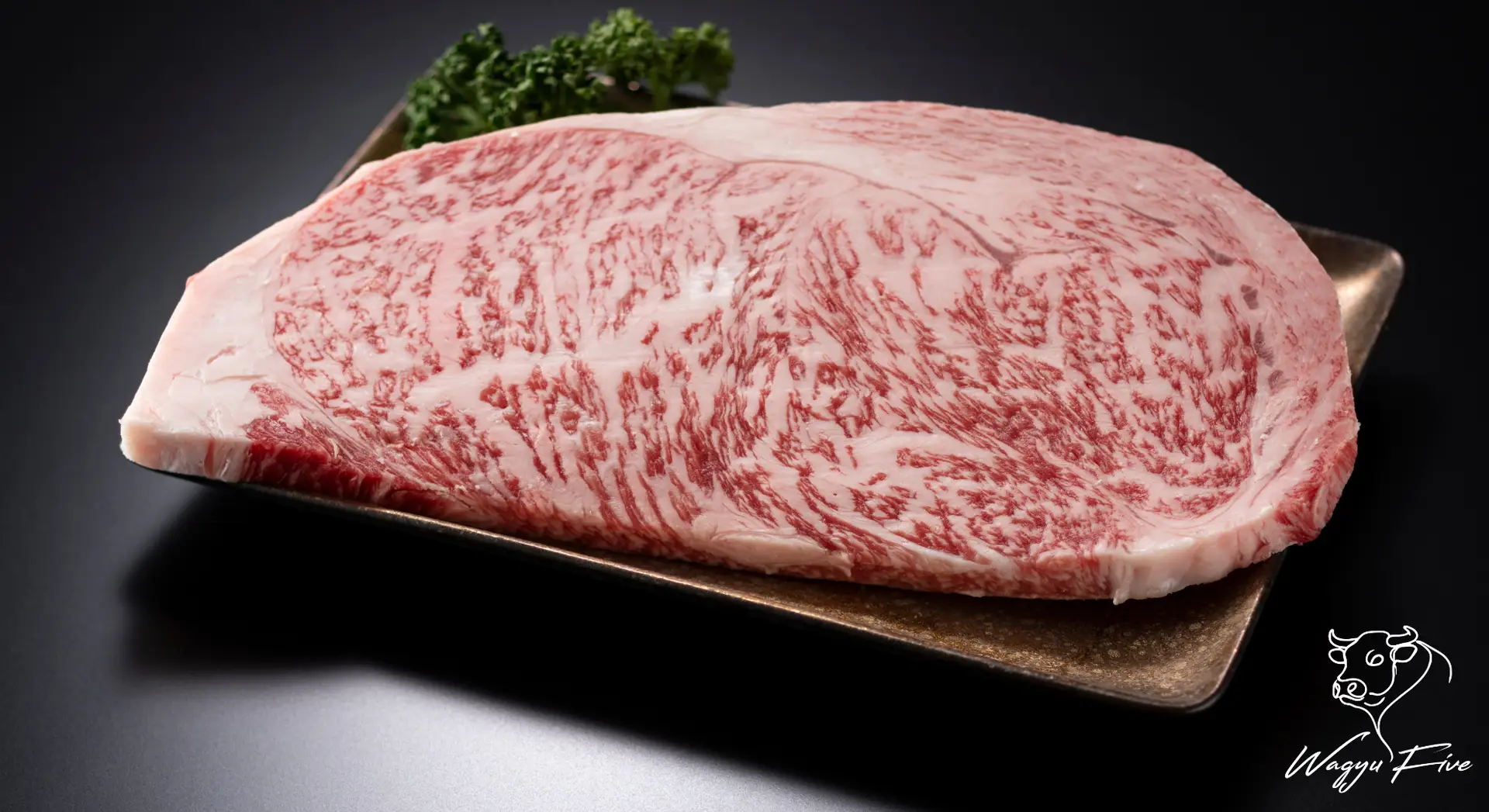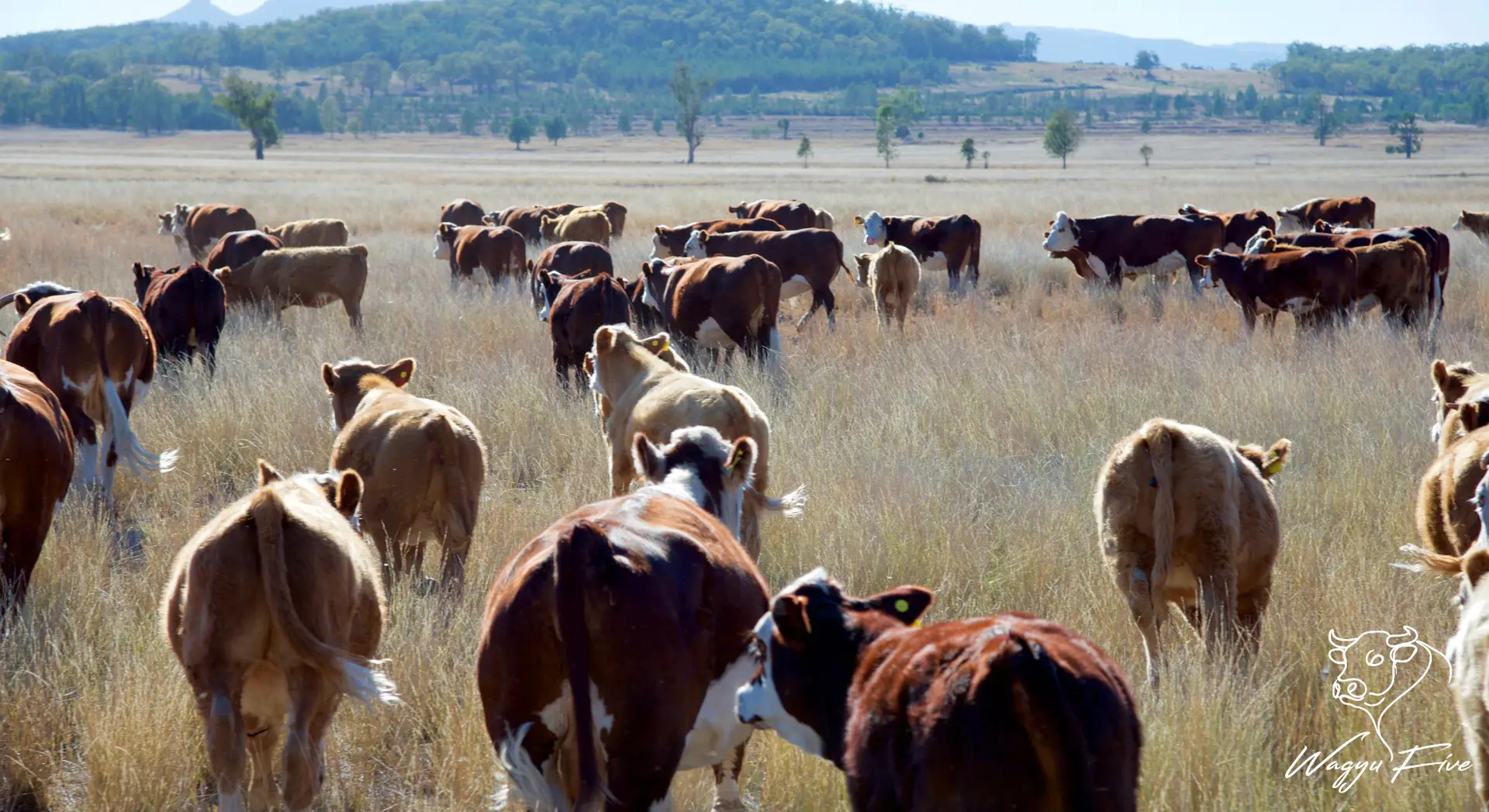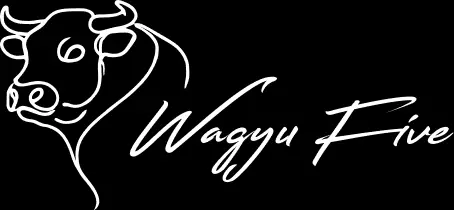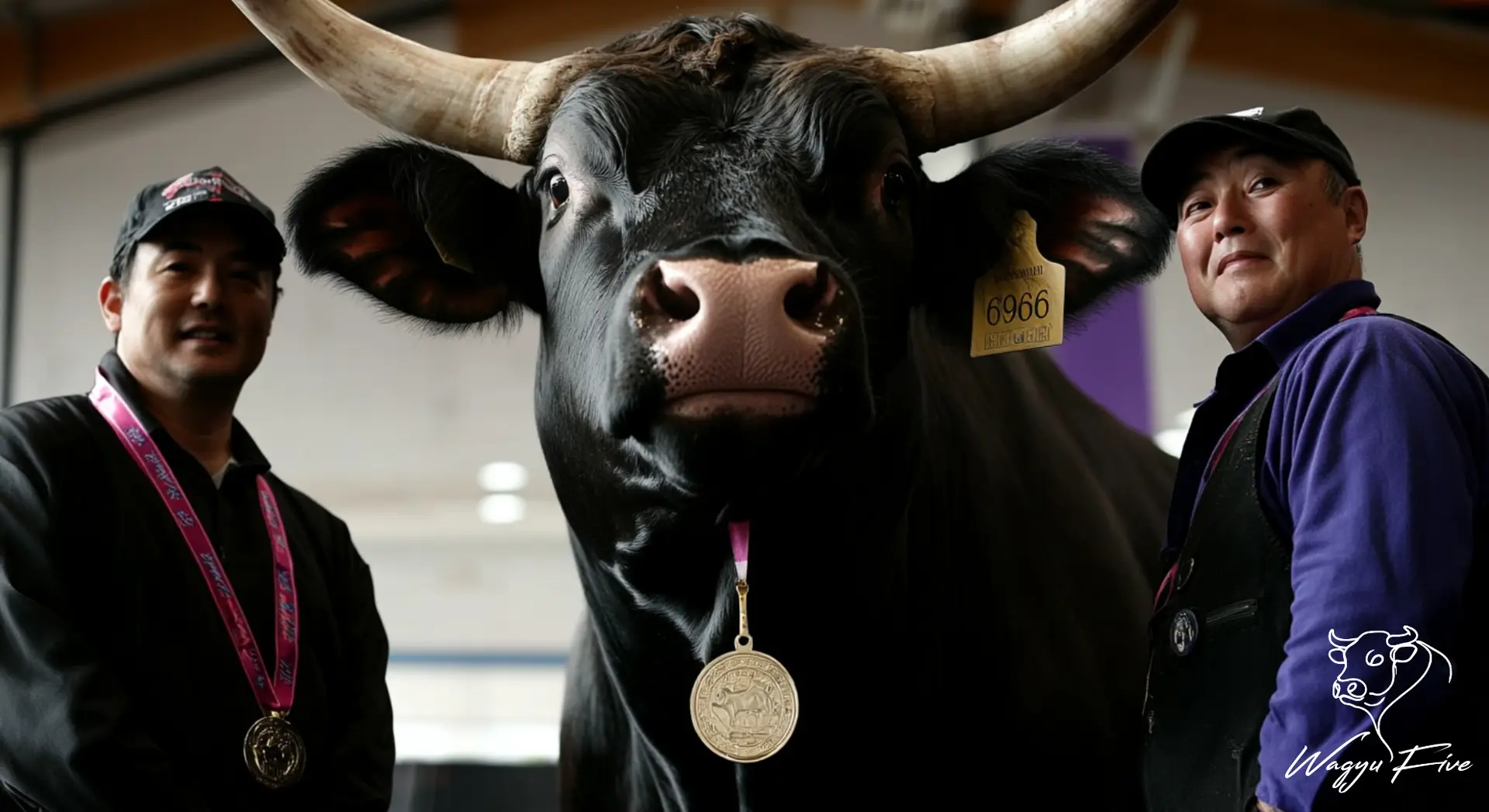Every five years, Japan’s most distinguished Wagyu cattle breeders and beef connoisseurs come together for the highly anticipated Wagyu beef Olympics—an extraordinary event where Japan’s finest cattle compete in a grand showcase of Wagyu excellence. This prestigious competition highlights the pinnacle of Japanese Wagyu quality, with breeders aiming for top honors in categories that test both breeding genetics and the quality of Wagyu meat.
Introduction to the Wagyu Beef Olympics
The Wagyu Olympics, also known as the National Competitive Exhibition of Wagyu, is Japan’s most prestigious competition dedicated to Wagyu beef cattle. Held every five years, it is a grand event where breeders from across Japan compete to showcase the best in Japanese Wagyu. With categories like breed improvement and meat quality, the event provides a comprehensive view of Japan’s Wagyu industry and often shapes the global reputation of the Japanese Wagyu market.
History and Significance of the Wagyu Beef Olympics
The Wagyu Olympics, formally known as Zenkyo, began in 1966 to evaluate and celebrate Wagyu beef quality, focusing on both the physical traits of cattle and the quality of the beef they produce. This competition has since become an essential event in Japanese agriculture. Winning a prize at the Wagyu Olympics can set a region’s cattle as a gold standard, significantly influencing demand and prices for Wagyu worldwide.
Competition Overview: What Are the Wagyu Beef Olympics?
The Wagyu Olympics invites breeders from Japan’s 41 prefectures to participate, with each prefecture selecting their best cattle for the competition. The competition emphasizes two main categories: breed improvement and meat quality. Each category is evaluated on a range of criteria, with awards given to the top performers in each division. The coveted Prime Minister’s Award is given to cattle that show outstanding quality across all judging aspects, becoming a mark of top-tier Japanese Wagyu.
Categories in the Wagyu Beef Olympics
Breed Improvement Category
This category focuses on the genetics and physical characteristics of Wagyu cattle. Here, judges look at factors like the cow’s structure, health, and genetic lineage. Key qualities assessed include bone structure, muscle build, and size, which indicate the cattle’s potential to pass on desirable traits for superior Wagyu beef.
Key Points of Judgement
- Bone Structure: Determines the overall framework of the cattle.
- Muscle Quality: Indicates potential for producing beef with marbling.
- Genetic History: Ensures the preservation and improvement of superior Wagyu lineage.
Meat Quality Category
The meat quality category examines the beef’s sensory characteristics, focusing on aspects like marbling, color, fat quality, and firmness. These attributes are critical for creating the famous rich, buttery texture that distinguishes premium Wagyu.
Judging Factors
- Marbling (Shimofuri): The presence and quality of intramuscular fat.
- Color and Luster: Assesses the brightness and appeal of the meat.
- Fat Quality and Firmness: Determines how smooth and flavorful the fat will taste when consumed.
How Scoring Works in the Wagyu Beef Olympics
The scoring system in the Wagyu Beef Olympics is meticulously designed to highlight the qualities that define premium Wagyu beef. Separate criteria are applied to each category, with judges using a point-based system to rank the cattle.
Judging Criteria for Breed Improvement
The Breed Improvement category is designed to identify cattle that will contribute positively to future Wagyu generations. This category examines the physical and genetic traits of each cow, emphasizing characteristics that can ensure consistency, quality, and sustainability of Wagyu beef production. The judging criteria are rigorous, as they aim to ensure that top Wagyu cattle possess ideal traits for breeding and longevity.
Key Criteria for Breed Improvement
- Bone Structure and Overall Build
- Why it’s important: Bone structure impacts the overall durability and strength of cattle. Wagyu are known for their unique skeletal structure that supports efficient muscle growth and optimal fat distribution.
- What judges look for: Judges assess the alignment, strength, and proportion of the bones, especially in the legs, hips, and spine, which should support healthy muscle development. A strong frame ensures the cow can maintain ideal health and produce high-quality meat over its lifespan.
- Muscle Development and Distribution
- Why it’s important: Muscular build affects the cow’s potential for producing beef with the marbling that defines Wagyu’s rich flavor and texture.
- What judges look for: Judges analyze the density and placement of muscles across the cow’s body, especially focusing on muscle groups around the shoulders, back, and hindquarters. A balanced muscle-to-fat ratio is essential, as it indicates a genetic potential for marbling without excessive bulk that might reduce meat quality.
- Genetic History and Lineage
- Why it’s important: Genetics play a foundational role in breed improvement. Cows with superior genetics are more likely to pass down desirable traits, such as high marbling and tenderness, to their offspring.
- What judges look for: Judges assess the cow’s lineage, which is meticulously documented in Japan. They prioritize cows with a proven family history of high-quality meat production, including ancestors that have won previous awards or scored highly in past competitions. Genetic markers related to marbling, flavor, and health are considered, as they affect the long-term quality of the Wagyu breed.
- Overall Health and Disease Resistance
- Why it’s important: A cow’s resilience against disease impacts both its immediate quality and its breeding potential.
- What judges look for: Judges evaluate physical signs of health such as coat shine, alertness, and energy level. Cows that show resistance to common ailments have greater breeding potential, as their offspring are likely to inherit robust immune systems, reducing the need for medical intervention and ensuring a sustainable breed.
- Temperament and Manageability
- Why it’s important: Wagyu are known for their calm nature, which reduces stress and improves meat quality. Calm cattle produce beef with a better texture and marbling due to reduced cortisol levels.
- What judges look for: Cows are observed for signs of stress and aggression, with preference given to calm and easily manageable animals. This trait ensures that breeding is low-stress and efficient, contributing to the welfare of the cattle and the overall quality of the Wagyu line.
Scoring Standards for Meat Quality
The Meat Quality category of the Wagyu Beef Olympics focuses on evaluating the sensory and physical characteristics of the beef produced by each cattle. Wagyu beef’s reputation stems from its exceptional marbling, flavor, and texture, and the scoring in this category assesses how well each cow meets the highest standards for Wagyu.

Key Scoring Standards for Meat Quality
- Beef Marbling Score (BMS)
- What it is: BMS measures the amount and distribution of intramuscular fat (the “marbling”) within the meat. Marbling is a defining trait of Wagyu and directly contributes to the meat’s buttery texture and flavor.
- Scoring: The BMS scale ranges from 1 to 12, with higher scores indicating more marbling. Only Wagyu with a BMS score of 8 or higher are considered premium grade, and scores of 12 represent the highest quality, indicating an abundance of evenly distributed fat that melts at low temperatures.
- Meat Color and Brightness
- What it is: Meat color affects consumer perception and is a visual indicator of freshness and quality. A bright, cherry-red color is associated with premium Wagyu.
- Scoring: Judges assess the color based on a standardized color scale. Meat that has a vibrant red color is scored higher than meat with dull or overly dark tones, which can be indicative of inferior quality or mishandling.
- Fat Quality and Luster
- What it is: The quality of the fat itself, including color and luster, affects the taste and mouthfeel of Wagyu beef. High-quality fat in Wagyu is smooth, lustrous, and white, with a sheen that indicates freshness.
- Scoring: Judges score fat quality based on a “fat color standard,” favoring fat that is white with a light sheen. The luster and texture of the fat contribute to a luxurious, creamy taste when cooked, adding depth to the Wagyu experience.
- Firmness and Texture of Meat
- What it is: Firmness refers to the physical integrity of the meat, while texture pertains to the tactile feel when the meat is cut or chewed. Wagyu is known for being both firm and incredibly tender.
- Scoring: Judges assess firmness and texture by gently pressing the meat to gauge resistance. High-quality Wagyu should feel resilient yet tender, giving way under gentle pressure. A finely textured meat score indicates that the meat will have the classic Wagyu “melt-in-the-mouth” quality.
- Aroma and Taste
- What it is: Wagyu has a unique, sweet aroma and a flavor profile that sets it apart from other beef varieties. Aroma and taste are pivotal because they distinguish Wagyu beef from other premium beef.
- Scoring: Judges perform a sensory evaluation of the aroma, looking for a mildly sweet and slightly nutty scent that is distinct to Wagyu. Taste evaluations prioritize richness and umami, with high scores awarded to beef that provides a smooth, flavorful finish without excessive oiliness.
Recent Winners and Their Achievements

Spotlight on Kagoshima Prefecture
In the 2022 Wagyu Beef Olympics, Kagoshima Prefecture achieved notable success, winning six of the nine judged categories. This includes the Prime Minister’s Prize, awarded for their exceptional meat quality and breed characteristics. Kagoshima’s achievement further established its cattle as one of the most sought-after in the Japanese Wagyu market.
Miyazaki’s Continued Excellence
Miyazaki Prefecture, known for consistently high-quality Wagyu, has also been a frequent winner. In the 2022 competition, Miyazaki’s cattle continued their legacy, securing top positions in multiple categories and showing superior marbling and texture, which are the hallmarks of premium Wagyu.
What It Means to Win the Wagyu beef Olympics
Winning the Wagyu Olympics is a life-changing achievement for Japanese cattle breeders and a high honor within Japan’s esteemed agricultural sector. For breeders, a victory at this event represents the culmination of years—if not decades—of dedication, strategic breeding, and rigorous attention to the highest standards of Wagyu cattle management. Let’s explore the broader impact and significance of winning the Wagyu Olympics:
National and Global Recognition
A win at the Wagyu Olympics brings widespread recognition to the winning breeders and their prefectures, instantly setting their Wagyu beef apart from competitors. In Japan, where Wagyu beef is a point of national pride, a win establishes a breeder’s cattle as the new gold standard. The award signals not only to Japanese consumers but also to global beef connoisseurs and luxury dining establishments that this is among the world’s best beef. As a result, top restaurants, gourmet stores, and high-end beef suppliers around the globe seek Wagyu from these champion lines.
Boost to Prefecture’s Reputation and Branding
Victory in the Wagyu Olympics elevates not only the individual breeders but also their home prefectures. For instance, after winning multiple categories, regions like Miyazaki and Kagoshima have become synonymous with the highest-quality Wagyu, joining the ranks of iconic beef brands. These regions can then capitalize on their enhanced reputation to promote tourism, local beef festivals, and culinary events, attracting visitors eager to experience award-winning Wagyu straight from the source. A win thus acts as a powerful marketing tool, helping the prefecture’s agricultural and tourism sectors thrive.
Inspiration and Motivation for Future Breeders
A victory at the Wagyu Olympics doesn’t only affect the winning breeder but serves as a source of inspiration for other breeders across Japan. It encourages them to uphold strict breeding and cattle management standards, ensuring that Japan’s Wagyu remains unparalleled. The competition fuels a cycle of continuous improvement, pushing breeders to innovate within the framework of traditional practices. Aspiring breeders are motivated to take part in future competitions, aiming to add their cattle to the legacy of champions and contribute to the excellence of Japan’s Wagyu industry.
Where to Buy Wagyu in Metro Manila
For those in Metro Manila looking to experience premium Wagyu beef, various suppliers offer Japanese-imported Wagyu. Some high-end restaurants and specialty butcheries are also known for carrying these premium cuts. You can also look for online websites that offers Wagyu Cuts that can be delivered right to your home. Look for verified suppliers that source directly from Japan to ensure authenticity.
The True Essence of Wagyu Beef Olympics
The Wagyu Beef Olympics is much more than a cattle competition—it’s a grand showcase of Japan’s agricultural excellence. With rigorous judging criteria and prestigious awards, it honors the best Wagyu breeders and highlights the quality of Japanese Wagyu beef to a global audience. Winning this competition elevates a prefecture’s status, demand, and reputation worldwide including Metro Manila, Philippines. For consumers, this distinction ensures a remarkable culinary experience, embodying the finest qualities of Japanese Wagyu.



